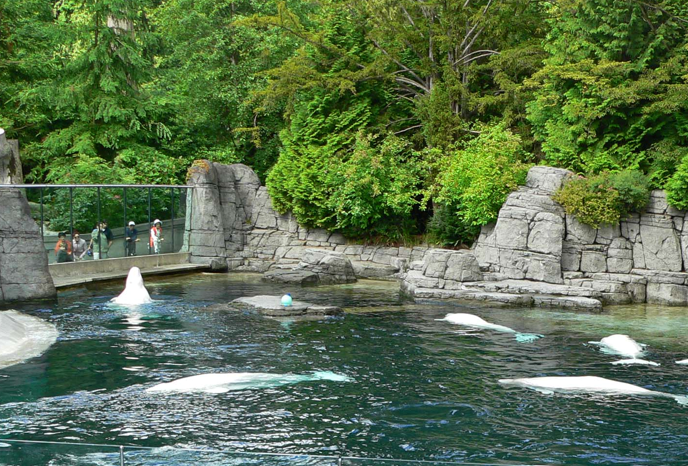A few days after a training boat for the Royal Canadian Marine Search and Rescue was surrounded by up to 200 playful dolphins, I was on a beach in Maui with my partner watching a pod of humpback whales breaching on the horizon.
It was quite the show, and I don’t mean the whales exclusively. Children yelled out with excitement, tourists in loud shirts stopped and fumbled for their cameras, and a father in a Speedo made a mad dash to alert his wife to the sunset show of airborne krill-swillers.
It’s remarkable how human beings react to animals in their natural environment. Any of us lucky enough to have witnessed a herd of caribous, a murmuration of starlings, a mass murder of crows — to say nothing of a chorus line of humpback whales — knows the drill. There is the gut-level recognition that wild animals are most real, most affecting, in their natural environment.
The humpback sighting brought to mind a memory of quite the opposite: a pitiful zoo at Stanley Park that once featured snakes, emus, monkeys, kangaroos and wolves. The penguins had a cement slide for their lowered-expectations recreation, but they were better off than the polar bears. I rem ember seeing the last sad, yellowed specimen “sunning” itself in the zoo’s brutalist-architecture fantasy of a polar bear home. Never once did I see the animal in motion (the enclosure is still visible just west of the Brockton Oval, as empty and timeworn as an Egyptian pharaoh’s sarcophagus).
In the same time period, the nearby aquarium offered shows featuring dolphins and three killer whales, Hyak, Finna and Bjossa, that soaked delighted visitors with trained routines. The gift shop sold plush toy orcas and trinkets to commemorate the encounters between orcas and oglers, but the toys weren’t exact anatomical matches without the drooping dorsal fins of the penned performers.
The orcas are no longer there, but Vancouver Aquarium’s rationale for keeping cetaceans in captivity, then as now, is that it’s educational for the young and promotes the values of animal conservation. Is there any actual evidence for this, or is this about lowbrow spectacle masquerading as natural history?
Today, anyone with an HD television and the Discovery Channel is more likely to expose themselves and their kids to more marine biology, with better visuals, than anything offered by fish-tossing whale trainers. (And if tourists or locals want to see cetaceans up close in their natural habitat, there are whale tours galore on Vancouver Island.)
On a recent CBC radio interview, Vancouver Aquarium CEO John Nightingale was asked if the aquarium would bring in more big marine mammals for its planned $100 million expansion. “The simple answer is likely,” he responded.
If that’s the plan — and the aquarium has been sending out mixed messages on this — the arc of history is running in the opposite direction. The Stanley Park zoo was shuttered in 1996 after a referendum two years earlier in which a majority of voters chose to close the zoo and phase out the animal exhibits. The aquarium’s orca show ceased in 2001. And in August of last year, the U.S. government nixed a permit to the Georgia Aquarium and two other American aquariums to import 18 caught-in-the-wild beluga whales from Russia.
The beluga is the last marine mammal with big box office for the remaining Sea Worlds and aquatic exhibits. There is little doubt we will hear all kinds of public relations talk about the need for their continued capture and choreographing, in spite of the abysmal record of premature deaths of whales in captivity. But the effort is failing to convince, because growing numbers of people believe it is terrifically cruel to condemn sentient, ocean-roaming beings to concrete tanks for life, just for the sake of Homo sap’s amusement and ticket sales.
There is little doubt there are employees of the Vancouver Aquarium who love their jobs and the animals, too. The organization does valuable work. But the practice of cetacean captivity is as tired and tragic as the last mangy, ’90s-era polar bear of the Stanley Park Zoo — and it is destined to go the way of cock-fighting, bull-baiting, slave trading and witch burning. It’s just a matter of enough people getting the memo.



